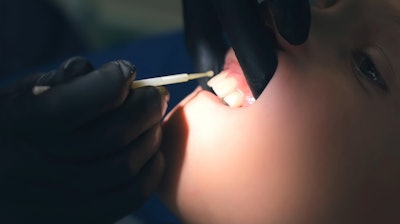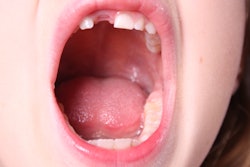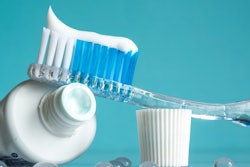
Semiannual topical application of silver diamine fluoride (SDF) or sodium fluoride was no more effective than a placebo in preventing children from developing approximal caries. The 18-month clinical trial was published on June 2 in BMC Oral Health.
In high-risk caries groups, a combination of strategies, including brushing with fluoride toothpaste, educating caregivers to improve oral health literacy, promoting schools and communities to create healthy dietary environments, and implementing water fluoridation, should be implemented, the authors wrote.
“The caries development rates increased over time regardless of the intervention group,” wrote the authors, led by Varangkanar Jirarattanasopha of the department of pediatric dentistry at Mahidol University in Bangkok.
Though they are topical agents, 5% sodium fluoride and 38% SDF are child-friendly caries prevention interventions; however, trials evaluating their effects on the approximal surfaces of primary teeth are limited. Therefore, to compare the effectiveness of the interventions in the primary teeth of preschoolers at a high risk of developing caries, 155 children between the ages of 4 and 6 who attended public schools were enrolled in the study. The children had at least one quadrant showing sound contact surfaces of posterior teeth and had to undergo clinical exams and bitewings.
The children were randomly separated into three groups. In the placebo group, there were 53 children. There were 52 children in the group that had 5% sodium fluoride applied to their teeth, and there were 50 children in the group that had 38% SDF applied to their teeth. All children had follow-up visits at six months, 12 months, and 18 months, according to the study.
In the placebo group, the rate of developing approximal caries was 24%. In the sodium fluoride and SDF groups, the rates of caries development were 17% and 27%, respectively, the authors wrote.
After adjusting for factors, including oral health-related habits and clinical characteristics, regression analysis showed no differences in caries development rates between the three groups of children (p = > 0.05), they wrote.
However, the study had limitations. Since the study explored the primary teeth of preschool children with high caries risk in a school-based setting, the results cannot be generalized to other age groups and different tooth decay risks, the authors wrote.
More studies should be conducted to better understand the efficacy of different frequencies of professionally applied topical fluorides in the prevention and control of approximal carious lesions, they wrote.
“Preventing new caries development or arresting the progression of carious lesions cannot be accomplished with a single intervention, such as the application of professional topical fluoride, especially in children at high risk for caries,” Jirarattanasopha et al concluded.




















